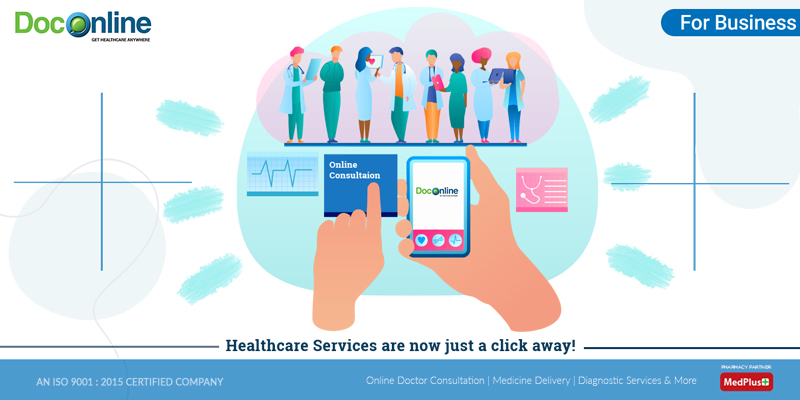How Subscription Based Healthcare is Transforming Patient Access to Services
How Subscription Based Healthcare is Transforming Patient Access to Services
Blog Article
Comprehending the Cost-Effectiveness of Subscription-Based Medical Care Versions
As the medical care landscape progresses, subscription-based versions emerge as a compelling alternative, guaranteeing to redefine exactly how individuals handle clinical expenses. Examining these versions' cost-effectiveness requires a nuanced comparison with standard insurance, taking into consideration both economic implications and individual fulfillment. While they use transparency and predictability in costs, inquiries stay concerning their ability to satisfy varied medical care demands, especially for specialized therapies. The viewpoints of health care carriers better complicate this equation, offering a diverse obstacle. What does the future hold for these designs, and can they really supply on their guarantee of accessible, cost effective care?
Introduction of Subscription-Based Designs
Subscription-based health care designs, sometimes referred to as straight medical care or attendant medicine, are significantly getting focus as a prospective service to inefficiencies within standard medical care systems. These models operate the concept of offering individuals direct access to medical care providers with a regular monthly or yearly cost, bypassing the requirement for typical insurance coverage mechanisms. This plan aims to enhance patient-provider communications by reducing management burdens, which commonly prevent prompt and customized treatment.
At the core of subscription-based models is the focus on an extra tailored patient experience. Patients profit from improved access to their physicians, frequently consisting of next-day or same-day consultations, prolonged examination times, and straight interaction channels such as phone or video phone calls. This version cultivates a positive technique to medical care, where clients and companies can collaboratively focus on preventative care and chronic illness management.

Expense Contrast With Typical Insurance Coverage

One of the main financial advantages of membership designs is transparency in expenses. Alternatively, typical insurance coverage may be a lot more helpful for people calling for specialized care or pricey therapies not covered under a registration model, as they benefit from the broader protection network and cost-sharing systems.
However, cost-effectiveness is context-dependent. While registration versions could offer cost savings for those mostly needing health care, people with persistent problems or specialized healthcare needs may discover conventional insurance policy much more comprehensive. Examining details healthcare demands and prospective use is critical in establishing the most cost-effective alternative for people.
Impact on Person Complete Satisfaction
Individual fulfillment within subscription-based health care designs typically reflects a significant renovation over typical insurance coverage systems. Unlike conventional systems, where patients could experience hold-ups in receiving care, subscription-based designs guarantee more straight and timely interactions with medical care suppliers.
Additionally, the transparency in expenses related to hop over to here subscription-based healthcare eases the usual frustrations associated with unforeseen costs and complicated invoicing processes seen in typical insurance (subscription based healthcare). Clients value knowing the specific economic commitment upfront, causing increased trust fund and confidence in their medical care management
Furthermore, the emphasis on preventative care and health in subscription designs adds to improved health and wellness outcomes, even more boosting client satisfaction. By focusing on recurring health care as opposed to anecdotal care, clients experience an even more all natural and continuous healthcare journey.
Moreover, the boosted provider-patient relationship cultivated in these versions, identified by more time spent per person and customized interest, plays a crucial role in raising individual contentment degrees, as patients feel genuinely taken care of and comprehended.
Provider Experiences and perspectives
From the company's perspective, subscription-based health care models provide a transformative method to providing medical services. These models emphasize a proactive and preventative healthcare strategy, allowing service providers to concentrate on extensive patient care without the restraints of conventional fee-for-service plans (subscription based healthcare). This shift in focus often causes boosted individual results and enhanced service provider complete satisfaction, as healthcare specialists can allot even more time and resources to patient involvement and customized care strategies
Additionally, membership models promote predictable income streams, which enhance economic stability for doctor. This predictability enables for improved source planning and allocation, adding to a more effective healthcare distribution system. Companies can purchase personnel modern technology, infrastructure, and training renovations, thus boosting the quality of treatment offered.
Nevertheless, the change to subscription-based designs is not without difficulties. Suppliers should adapt to new operational frameworks, which can involve considerable changes in invoicing techniques and client management systems. Furthermore, there is an inherent demand for durable data management to track person end results and make certain top quality care. Regardless of these hurdles, several providers discover that the advantages of increased individual communication and structured operations outweigh the preliminary challenges, making subscription-based models an attractive choice.
Future Prospects and Challenges

A key difficulty is regulatory conformity, as membership models have to comply with evolving medical care plans and insurance coverage requirements. This demands continuous adjustment and development to ensure positioning with legal requirements. Additionally, incorporating these models right into existing medical care facilities can be complex, needing significant investments in modern technology and training.
There is likewise the prospective risk of producing injustices in health care accessibility, as subscription designs may prefer those who can manage them, leaving at risk populations underserved. Resolving this requires thoughtful consideration of rates strategies and subsidy devices to ensure inclusivity.
Final Thought
Subscription-based medical care models provide a viable option to standard insurance by check my reference providing economic predictability and openness, particularly benefiting individuals with persistent problems or frequent health care needs. The cost-effectiveness of these designs rests upon specific medical care usage patterns and situations. While they may improve person satisfaction and improve budgeting, difficulties stay in resolving specialized treatment demands. Future considerations include balancing comprehensive coverage with cost and integrating these designs within the wider health care system for ideal results.
Subscription-based health care models, sometimes referred to as straight key treatment or concierge medicine, are significantly obtaining interest as a prospective service to inefficiencies within traditional medical care systems. Unlike standard systems, where clients might experience hold-ups in getting care, subscription-based versions make sure more straight and prompt communications with healthcare service providers.
These models highlight a proactive and preventative health care strategy, permitting companies to focus on thorough client treatment without the restrictions of conventional fee-for-service plans. As these models proceed to gain grip, they offer the possible best site to transform person access to care, simplify service distribution, and enhance health care investing.Subscription-based medical care models offer a practical choice to traditional insurance policy by supplying financial predictability and openness, specifically benefiting people with persistent conditions or regular healthcare requirements.
Report this page